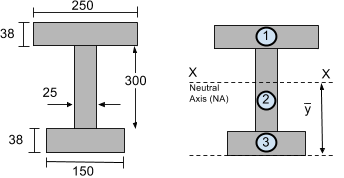

It can be inferred that inertia is related to the mass of a body. The most straightforward approach is to use the definitions of the moment of inertia (10.1.3) along with strips parallel to the designated axis, i.e.First of all, let us discuss the basic concept of moment of inertia, in simple terms. We will use these observations to optimize the process of finding moments of inertia for other shapes by avoiding double integration. We saw in the last section that when solving (10.1.3) the double integration could be conducted in either order, and that the result of completing the inside integral was a single integral. Of course, the material of which the beam is made is also a factor, but it is independent of this geometrical factor. A beam with more material farther from the neutral axis will have a larger moment of inertia and be stiffer. The shape of the beam’s cross-section determines how easily the beam bends. The appearance of \(y^2\) in this relationship is what connects a bending beam to the area moment of inertia. This moment at a point on the face increases with with the square of the distance \(y\) of the point from the neutral axis because both the internal force and the moment arm are proportional to this distance.

Think about summing the internal moments about the neutral axis on the beam cut face. The internal forces sum to zero in the horizontal direction, but they produce a net couple-moment which resists the external bending moment.įigure 10.2.5.Internal forces in a beam caused by an external load. The change in length of the fibers are caused by internal compression and tension forces which increase linearly with distance from the neutral axis. The neutral axis passes through the centroid of the beam’s cross section. The points where the fibers are not deformed defines a transverse axis, called the neutral axis. Fibers on the top surface will compress and fibers on the bottom surface will stretch, while somewhere in between the fibers will neither stretch or compress. When an elastic beam is loaded from above, it will sag. Assume that some external load is causing an external bending moment which is opposed by the internal forces exposed at a cut. To provide some context for area moments of inertia, let’s examine the internal forces in a elastic beam.


 0 kommentar(er)
0 kommentar(er)
